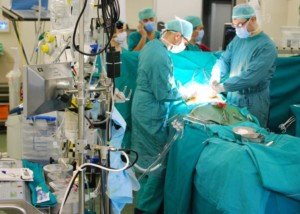Why is it that some heart bypass patients are on the golf course six weeks after surgery, while others take four months to fully recover?
There are three issues that are predictive of how long recovery will take from open heart surgery.
The First Two
“There are two major factors which dictate what the recovery period from open heart surgery will be like,” says Christopher J. Hanifin, PA-C, who was previously a physician assistant in open heart surgery with Cardiothoracic Surgery of South Bend in South Bend, IN.
“The first is the patient’s overall state of health prior to surgery,” continues Hanifin.
“Many patients with cardiovascular disease are not in a state of great general health. A history of things like smoking or diabetes can lead to complications and delayed wound healing.”
Concurrent conditions to the one in question are known as comorbidities. These are more predictive of recovery time than is old age alone.
Not all heart surgery patients are obese, diabetic or have kidney problems – which are serious comorbidities.
Another pre-existing condition that can slow recovery time is mobility impairment.
Complications
My mother took four months to FULLY recover from her coronary artery bypass surgery (CABG) and pacemaker placement.
She wasn’t obese, not diabetic, didn’t smoke or drink, and had no mobility issues.
However, what slowed her recovery was a mysterious postop fainting issue that nobody on her medical team could explain.
She sustained two brain bleeds after passing out and hitting her head. This unforeseen, and unusual, complication definitely prolonged full recovery.
The fainting resolved on its own over time, but it’s an example of a strange complication that could interfere with recovery.
“The second major factor is the nature of the surgical procedure,” says Hanifin. “In most procedures, the bypasses themselves are created in a similar fashion and heal fairly rapidly.

“One thing that can make a difference is the nature of the procedure used to gain access to the heart.
“In a ‘traditional’ bypass procedure, the sternum is sawed open and wired back together. Just like any fractured bone, it takes weeks for the fracture to heal.
“Patients are usually advised to avoid any strenuous activity with their arms for a minimum of two months’ longer if there are other concerns about the patient’s health.”
How to Speed up Recovery from Heart Surgery
“Depending upon the location and number of bypasses needed, there are two approaches that may speed a patient’s recovery,” says Hanifin.
“In some situations, it may be possible to use a minimally invasive approach that uses a number of small incisions and avoids sawing the sternum open.”
This approach is called endoscopic. Unfortunately, it’s not used for CABG. But it’s commonly used for valvular repair.
“These operations are technically challenging, but in an experienced center, patients will get back to normal activities more quickly,” adds Hanifin.
“It is also possible in some cases to avoid placing a patient on the bypass machine. ‘Post-pump syndrome’ is well-known among patients who are placed on cardiopulmonary bypass.
“After being placed on bypass, it’s fairly common for patients to have memory deficits, depression, nightmares, poor appetite and other symptoms following surgery. These symptoms are usually transient and generally resolve within two months.
“A patient who undergoes an ‘off-pump’ minimally invasive procedure can expect to get back to their activities much more quickly than a patient undergoing a traditional procedure.”
For CABG, off-pump is very uncommon; most surgeons are not trained at this.
Third Factor that Influences Recovery Time Following a Heart Bypass Operation
What kind of family support system that faces the patient, once discharged from the hospital, will affect recovery time.
If there’s no support system, the patient may end up spending a few weeks in a skilled nursing facility for cardiac rehab – eating meals in a dining room full of strangers, sleeping in a room that isn’t theirs, etc. It’s not home.
But they must stay there because they live alone and there’s no relatives to stay with them, nor friends to help them out.
If a patient goes straight home to a welcoming, eager-to-help family, this will speed recovery.
Recovery Times
What defines “recovery”?
• Is it being able to play 18-hole golf?
• Is it when family members start believing that the patient no longer needs help?
• Is it when cardiac rehab and doctor appointments end?
• In general, recovery means that the patient is back to their old self as though nothing much had happened.
The time span for this may range from three weeks to four or more months, depending on all the aforementioned factors.
 Christopher J. Hanifin, PA-C, is currently Department Chair and Assistant Professor, Department of Physician Assistant, Seton Hall University, NJ.
Christopher J. Hanifin, PA-C, is currently Department Chair and Assistant Professor, Department of Physician Assistant, Seton Hall University, NJ.
 Lorra Garrick has been covering medical, fitness and cybersecurity topics for many years, having written thousands of articles for print magazines and websites, including as a ghostwriter. She’s also a former ACE-certified personal trainer.
Lorra Garrick has been covering medical, fitness and cybersecurity topics for many years, having written thousands of articles for print magazines and websites, including as a ghostwriter. She’s also a former ACE-certified personal trainer.
.










































